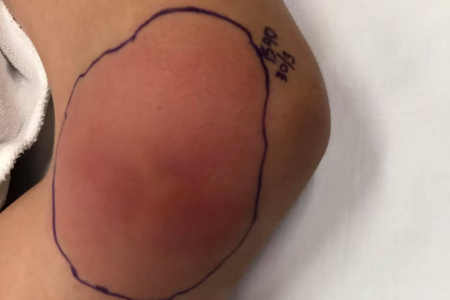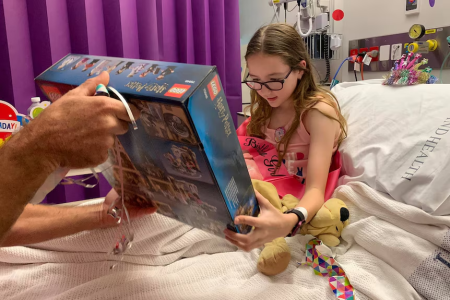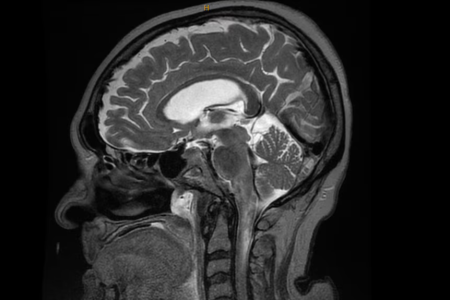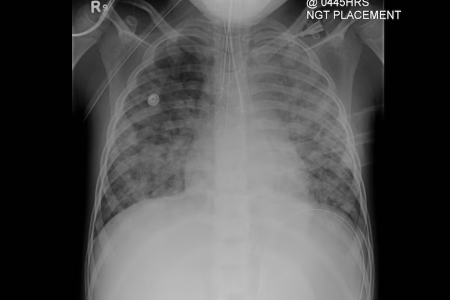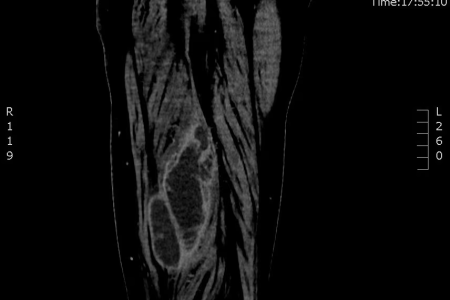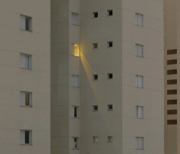Difficult to diagnose and potentially deadly — this lesser-known disease is becoming more common
By
ABC News
- Replies 0
A deadly bacterial disease that mimics symptoms of other illnesses is becoming more common after an historically wet summer in the tropical climates of north Queensland.
So far this year the soil-borne bacteria, melioidosis, has claimed 31 lives with the total number of cases exceeding 200.
Experts say it is the worst year for the disease in Queensland in about three decades.With a predicted increase of severe weather in the face of climate change, they say it's possible the disease will pop up in areas where it hasn't been recorded before and numbers could steadily increase.
For 17-year-old Camille Leahy and her mum Danika, when the rains came to Townsville this year they couldn't help but feel anxious.
While their house wasn't affected during the city's significant flooding event in 2019, it brought a mystery "mud bug" illness landing Camille, then 11, in hospital multiple times.
It first popped up as a condition called "erythema nodosum", which are raised red lumps or ulcers all over her legs that caused her intense pain.
"I remember drawing circles around the dots and then the next morning waking up and it'd be way bigger than the circle."
Some were around the size of a 50 cent piece while others were the size of a human hand.
She was unable to run, dance and do athletics and much of the time she could barely walk without pain.

Camille Leahy was admitted to hospital multiple times for extended periods. (Supplied: Danika Leahy)
Rare disease took three months to spot
After repeated visits to doctors and specialists over three months, Camille finally received a diagnosis.
In the meantime she'd developed gastro-intestinal problems.
"I think in that year all up Camille had just shy of 50 blood tests, X-rays, ultrasounds, CT scans, MRIs, biopsies, needle aspirations; they did the works," mum Danika Leahy said.
It was only by chance that a junior doctor suggested they test for melioidosis.
Because of her young age and health, her case was considered extremely rare.
"We were just very lucky that that one particular doctor had run those tests because had she not, we don't know how that would have changed the outcome honestly," Ms Leahy said.
In Australia, the disease has a mortality rate of between 10 and 15 per cent.
In some parts of South East Asia, it's as high as 70 per cent.
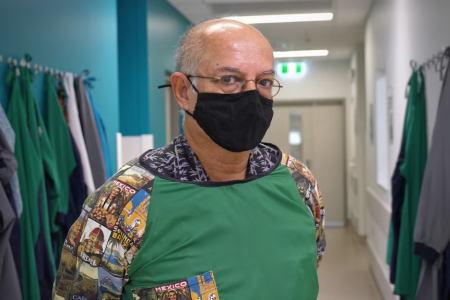
Townsville microbiologist Dr Robert Norton specialises in the research and treatment of melioidosis. (ABC North Qld: Nathalie Fernbach)
'Mud bug' linked to rainfall
Dr Robert Norton is a retired microbiologist who still works with the College of Pathologists delivering training on how to identify melioidosis.
"It is a very significant disease in terms of its ability to kill," Dr Norton said.
Of this year's 31 deaths, 24 people were aged over 60 years old — with many having known risk factors including diabetes, chronic lung disease or other conditions that compromise immunity.
Dr Norton said the organism that causes the disease — burkholderia pseudomallei — is pushed to the surface of the soil as the water table rises, which is why it's more prevalent after rain.
"Research has shown that if there's more than 300 millimetres of rain in a fortnight, we start to see disease occurring in our vulnerable people," he said.
When it is in the environment it can be contracted through contact with the soil, or even breathed in when winds aerosolise the bacteria.
Concerns as climate and cities change
Dr Norton said if we saw a continuation of widespread rainfall similar to this wet season, then it was very likely the disease would appear in places it hadn't been detected before.
"How far south it expands is hard to say because it has to be present in the soil," Dr Norton said.
Dr Ella Meumann, a senior research fellow at the Menzies School of Health Research in Darwin, said it could be difficult to gauge what impact climate change could have on the distribution of the disease in the future.
"Disentangling those sorts of variations in climatic factors from actual climate change and those more longer term trends is challenging," she said.
Internationally, and in Australia, there are many examples where severe weather has "unmasked" the bacteria already likely to be present in the soil.
"There have been cases reported in south-east Queensland during periods of heavy rainfall, likewise in the desert regions of Central Australia, there are occasionally cases that occur," Dr Meumann said.
"In recent years it's been identified for the first time in the environment in the Southern Continental United States in Mississipi."
Since 1989, the research team has been tracking how the disease spread throughout the suburbs of Darwin.
Dr Meumann said it was understood construction work and heavy earthworks could uncover the bacteria.
"With construction of new suburbs around Darwin, there has been an increase in cases potentially related to that sort of activity," she said.
A spokesperson for the health department said it had not observed a "geographical extension" of the melioidosis risk areas this year.
Easy to 'grow', hard to diagnose
Dr Norton said the disease was often difficult to diagnose as there were no typically presenting symptoms.
"The biggest problem with diagnosis is that it can mimic a lot of different diseases and in medicine you need to have an idea of what the bug is," he said.
It more commonly presents with respiratory symptoms and is often known to attach itself to prostates.
He said even looking at scans that showed the damage to organs and muscles, it was not evident melioidosis was present without testing it in a lab.
Samples from sputum and or blood are taken, cultured and then within 48 hours doctors are usually able to identify the bacteria.
Dr Norton said there needed to be an understanding of the bacteria in order to identify it correctly under a microscope.
"The bug may be grown, but not easily identified," he said.
"The challenge for laboratories, which are not familiar with the organism, is to learn how to diagnose it because people travel. You could get somebody from Melbourne spending two weeks up here during the wet season, returning [home] and going to Monash or Royal Melbourne with this sort of illness."
In Darwin, at the Menzies School of Health Science, there has been preliminary work to create a Rapid Antigen Test, which can be used to streamline diagnosis, but it's still in its infancy.
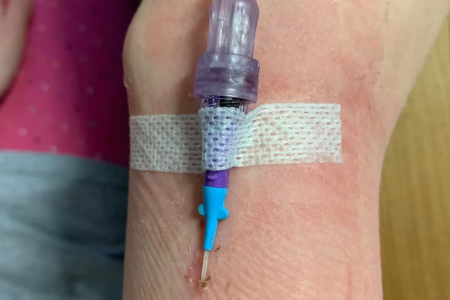
Camille Leahy was put on antibiotics that were administered intravenously for two weeks before a three month oral course. (Supplied: Danika Leahy)
Disease likely inhaled
While the disease is typically caught when a person with a cut on an exposed part of their body comes into contact with soil containing the bacteria, the cause of 75-year-old Lyn Coomber's illness remains unclear.
It's believed she caught the disease when rain inundated her third-floor Townsville apartment and soaked through carpets and furniture.
"We got some people in to dry the place out. We stripped the bedrooms of all the furniture and pulled up the wet carpet and that was fine," Ms Coomber said.
After the rain, she went to hospital for a planned heart her surgery but after a couple of days at home, she was struggling to swallow and had to return.
"I've been in an apartment for three years now and I didn't have any interaction in mud or anything like that, so I was a little bit bewildered about this," she said.
"I have a fairly active lifestyle but not gardening. I don't really dig."
Cause of illness remains unclear
The origin of Camille's illness in 2019 also remains a mystery. Her family believe they may have inadvertently brought home mud housing the bacteria, which then passed on to her.
When doctors discovered what she had, she was immediately hospitalised and put on a course of antibiotics.
Ms Leahy said it was obvious that, because Camille was so healthy and young, her body was fighting the illness off and keeping it at bay.
The melioidosis mystery plaguing scientists
Photo shows A middle-aged man wearing a grey singlet and beige cap sits in his backyard.A middle-aged man wearing a grey singlet and beige cap sits in his backyard.
Luke Bantoft has survived melioidosis but the experience has left him "petrified" of returning to his home where he believes he caught it.
She's worried there may be a level of complacency in the community around the illness given Queenslanders are so used to wet weather.
"I feel like the messaging that goes out there is very narrow with regards to what symptoms to look out for and what precursor [conditions] make you susceptible," she said.
"Camille had none of the main symptoms that we would normally look for so maybe there needs to be more messaging around that."
A health department spokesperson said the weekly number of newly reported infections had declined since it peaked in late January.
"[It] is currently tracking at a similar rate to the previous five years," the spokesperson said.
Written by Baz Ruddick and Chloe Chomicki, ABC News.


